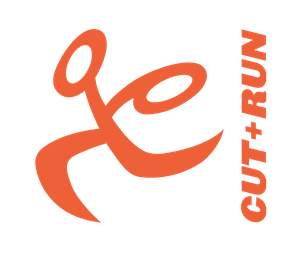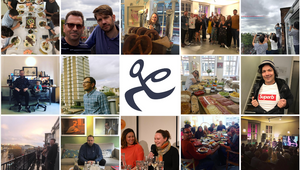
Is It Time to Take Stock Footage Seriously?

With live action shoots becoming difficult in many places, to say the least, phone cameras and webcams have found their time to shine during this pandemic. But so has stock footage, a resource that many in the creative industries have looked down upon in the past for being cheesy or too corporate. But when you’re an editor having to cut together more self-shot people in their homes, stock footage now brings a blessed bit of variety. Good editors are wrapping their heads around this creative challenge like never before and while it’s not a silver bullet that’s going to put bespoke footage out of business, more and more editors are fighting its corner.
LBB’s Alex Reeves caught up with Toby Abbott, partner and MD at Cut+Run London and Shutterstock’s chief revenue officer, Jamie Elden, to consider how things may have changed for good and how edit houses and stock footage companies have been finding new, more synergistic relationships.
LBB> How have you adapted your workflow and service offerings in response to the pandemic in general?
Toby> We’ve set up remote suites at our editors’ homes and invested in remote streaming solutions to ensure the interaction with our clients throughout the editing process.
LBB> And specifically, what role does stock footage play in that?
Toby> Forced change always results in innovation and it’s been interesting to see how agencies, production companies and clients have responded to being restricted by working in isolation. Shoots have become almost impossible to facilitate and we’ve seen webcams come into their own whilst the restrictions we all face are in place. Stock footage, for the right creative idea, can be a strong alternative, but it’s quite often frowned upon in the commercials environment as being too corporate. However, for an editor it creates a very different challenge to using material specifically shot for a script and creative idea. It’s not going to be right for everything but certainly shouldn’t be dismissed, we’ve seen some brilliant and award winning work created using stock footage.
LBB> What's been the biggest challenge to this evolution and how did you overcome it?
Toby> Initially, taking a tried, tested and polished edit house and having to dismantle it and then rebuild it in multiple locations all over London and as far afield as Oxford - this, over the course of a couple of days and whilst jobs were ongoing (a huge thank you to all the team for making it happen so seamlessly). Since then the biggest challenge has been the communication between editors, directors, agencies and clients. Editing is an extremely interactive process, it’s all about subtleties and you can’t get away from the efficiency of communicating face to face with everyone in the edit suite. It’s not quite the same over a video conference…
LBB> And from Shutterstock’s perspective, how much more demand have you seen for your content and services since Covid-19 took so much production out of the picture?
Jamie> Globally we are seeing an increased amount of inquiries about what types of services we are providing as creatives are having to pivot from their traditional way of production to execute projects. The market demand itself seems to be picking up as people have adjusted quickly to working remotely and leaning more into stock as a quality solution.
Film producers, video editors and marketers have always leveraged our footage to deliver both continuity in a scene, as well as entire video narratives, but with the recent challenges of social distancing guidelines and restrictions on gatherings, producers are looking for more flexible resources to help them deliver on projects. With this, we are seeing an increased interest in certain areas like premium footage, pre and post-production services as a result of entertainment production being shut down.
Stock content is more important now than ever to meet the demand of brands and businesses seeking meaningful ways to communicate and stay engaged with their audiences. Our goal is to continue to empower all entertainment and marketing uses with access to our teams and services daily 24/7.
LBB> What's been key to stepping up to support creative industries at this time?
Jamie> In addition to helping customers quickly find the image, video and music content they need to tell their story, we are providing flexibility and advice that can help in a time like this. It’s also important that we communicate effectively with thoughtful messaging to help creatives as they adapt to the changing strategies they are dealing with. This has been key for us in supporting our global community in real time.
We created a dedicated resource hub for creatives and businesses, from mom-and-pop to Fortune 100 businesses who are looking for insights on how to navigate these unprecedented times. The resource hub includes:
- Carefully curated commercial and editorial collections with high-quality images for those who are telling their own story of COVID-19, social distancing , working from home and support to their communities.
- Free curated video, music and image collections to support those looking to tell their stories in this new landscape
- Virtual backgrounds to spruce up your home office or add flavor to a meeting while working from home
- Informative insights on tips for adapting to our new reality, like working remotely for the first time and maintaining creativity
Most brands are working on a whole new set of messaging that was not in their 2020 plan. Agencies and brands are coming to us looking for existing content that can work with their brand initiatives, and with access to over 1 million contributors providing fresh content on a daily basis, there is an amazing array of choices.
LBB> How have you worked with companies like Cut+Run to more deeply integrate stock footage into how they work?
Jamie> Cut+Run is one of the many examples of innovative creative agencies that are able to get their messages across using entirely existing content. The incredibly talented team at Cut+Run London created teasers using just Shutterstock footage, demonstrating the sheer breadth of content available and the endless amount of possibilities that exist within the restrictions of the pandemic with existing resources.
LBB> Toby, can you tell us more about that project?
Toby> We have set our editors and assistants a challenge to create short teasers from library stock footage. It’s been an engagement exercise to keep our staff talking and focused on what we love to do. Visual storytelling is a craft and one of the most exceptional things about an edit house is that it creates an environment where this is the shared focus of the entire team. We wanted to do something that broke down the isolation and focused on this.
It’s meant that our editors, assistants and runners have all been creating work. Interacting, influencing and inspiring each other. The results have been great, the choice of footage, the message and the way they have edited really does bring through the individuals personality in their work.
LBB> What's your relationship with Shutterstock been like through this process?
Toby> Shutterstock has been incredibly helpful with this initiative. The challenge needed material and the brief we set obviously intrigued the team at Shutterstock, who were happy to let us loose using their footage.
LBB> How has the lack of live-action shoots changed how you view stock footage or how you feel about it?
Toby> The most successful use of stock footage has tended to rely upon the creative idea revolving around specific footage. We’ll have to see if this success can be applied to a broader range of commercial use during lock down but with good creative, picture research, time and a talented editor there is no reason why it can’t be a very real alternative during these restrictions.
Jamie> Stock content has become more of a staple in the last two to three years as quality and styles have dramatically caught the attention of agencies and brands, but we are now hearing from more traditional production houses who have always been 100% self-served. Overall, brands across the world, from Fortune 500 companies to boutique shops have been shifting to stock and UGC content-led campaigns to overcome these new limitations while still delivering important brand messages. More creatives are now recognizing the amount of creativity, quality and diverse content that exists today from a platform like Shutterstock, which we expect will result in the continued growth of creative content production.










